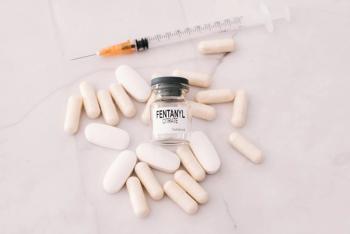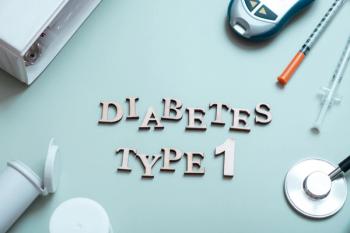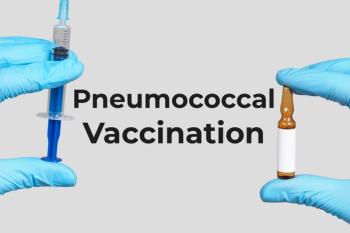
Entry-level salaries for hospital pharmacists expected to decline
Salaries of entry-level health-system pharmacists are expected to decline by at least 10% over the next five years, predicts a new report from ASHP.
Salaries of entry-level health-system pharmacists are expected to decline by at least 10% over the next five years, according to the American Society of Health-System Pharmacists (ASHP)’s new report, “
However, the forecast also includes more positive news for hospital pharmacists and pharmacy technicians. Pharmacists will be more involved in medication adherence and patient-care teams, and pharmacy residents and students will play a greater role in patient-care services. In addition, over the next five years pharmacy technicians in about half the hospitals represented in the survey will be involved in checking the accuracy of dispensing performed by other technicians, a process known as tech-check-tech.
Richard Walling
William ZellmerThe "Pharmacy Forecast" was based on results of a survey made by an appointed panel of 150 health-system pharmacists throughout the United States. The report authors include Richard Walling, BS Pharm, director of the Center for Health-System Pharmacy Leadership at the ASHP Research and Education Foundation; William Zellmer, BS Pharm, MPH, president of Pharmacy Foresight Consulting in Bethesda, Md.; and David Chen, BS Pharm, senior director of the Section of Pharmacy Practice Managers for ASHP.
Findings
David ChenAlarmingly, 39% of the report's panelists said that is “somewhat likely” and 21% said it is “very likely” that salaries for newly hired, entry-level, general-practice pharmacists in health systems will decline by up to 10% over the next five years. “Greatly expanded annual output of pharmacy graduates, increased use of technicians and technology in retail and institutional dispensing operations, and other factors have converged to produce an ample supply of pharmacists for health-system entry-level positions nationwide,” Zellmer and Chen wrote.
One potential consequence of this prediction is that pharmacists might become better positioned for patient-care positions that have a heavy medication management component, according to the authors.
In fact, pharmacists, technicians, students, and residents will more often be integrated into patient-care teams that include physicians, nurses, and nurse practitioners, according to the "Pharmacy Forecast." On at least 25% of health-system patient-care teams, nurse practitioners and pharmacists will provide most of the therapeutic guidance after the diagnosis and initial treatment plan have been established by a physician.
“The majority of [Pharmacy] Forecast panelists agreed that at least 50% of hospitals will continuously evaluate roles of team members throughout the medication-use process to ensure efficiency, safety, and reduce costs,” wrote Rita Shane, PharmD, FASHP, FCSHP, in the report. Shane is chief pharmacy officer at Cedars-Sinai Medical Center and assistant dean, Clinical Pharmacy, at the UCSF School of Pharmacy in Los Angeles,.
In fact, in at least 25% of hospitals, pharmacists will have authority to write discharge prescription orders to reconcile medication lists.
A majority – 79%– of the panelists said it is at least somewhat likely that a quarter or more of health systems will conduct their own specialty pharmacy programs within the next five years. This is a logical development, since specialty drug products are projected to grow from 24% of total drug expenditures in 2005 to 44% in 2030.
In addition, health-system pharmacists will be partnering more often with entities outside the hospitals. At least 50% of health systems will have formal relationships with retail healthcare clinics (such as those operated by chain drugstores) for patient referrals and the exchange of patient health information, according to the "Pharmacy Forecast." And at least 50% of hospitals will contract with a corporate entity such as a chain drugstore to monitor medication adherence and medication outcomes of discharged patients who are at risk for early readmission.
Training and practices
Other major findings of the "Pharmacy Forecast" include:
· Forty-eight percent of panelists believe it is “very likely” and 35% said it is “somewhat likely” that at least 50% of health systems will require accredited residency training for entry-level clinical positions in pharmacy practice.
· Twenty-five percent said it is “very likely” and 41 percent said it is “somewhat likely” that at least 50% of health-system pharmacy students on experiential rotations will provide essential patient-care services.
· At least 50% of hospital pharmacy departments primarily will use technicians to check the accuracy of dispensing by other technicians.
· In most of the health systems that have pharmacy residents, the residents will provide essential patient-care services.
· It is very likely that in 50% of health systems, all newly-hired pharmacy technicians will have completed accredited training and PTCB certification.
Newsletter
Pharmacy practice is always changing. Stay ahead of the curve with the Drug Topics newsletter and get the latest drug information, industry trends, and patient care tips.





















































































































































